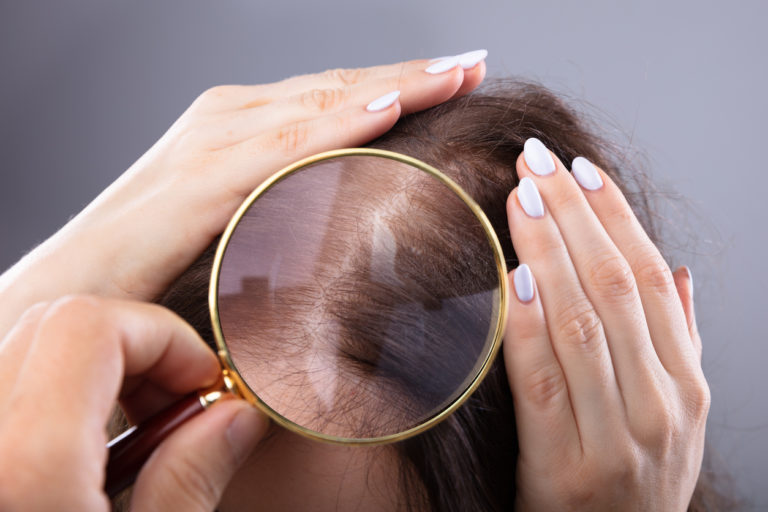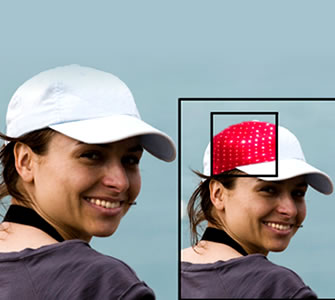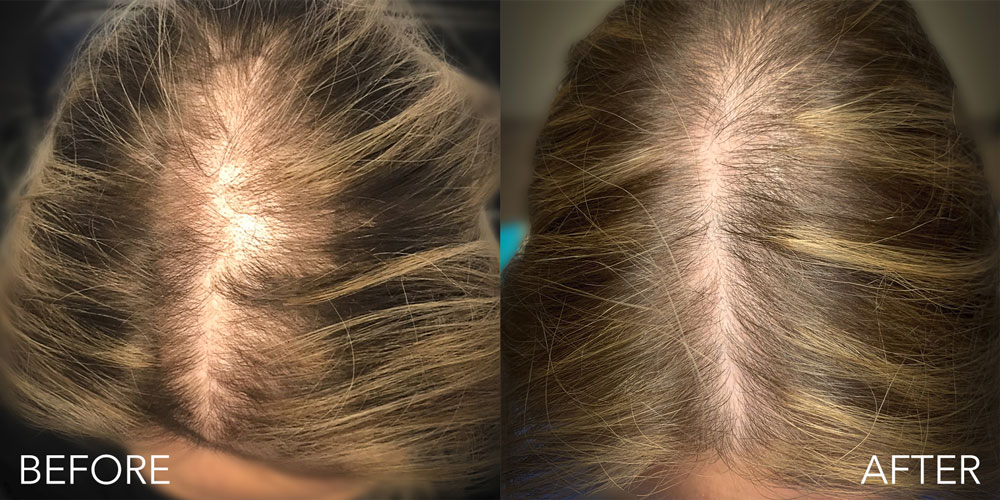HOW DOES HAIR RESTORATION WORK?

Dr. Craig Ziering is an authority in hair transplant surgery and hair restoration who treats many celebrity patients around the world. He is also at the forefront of research into hair loss, hair surgery, and hair restoration. So his methods have undoubtedly been proven, and he is continuously honing his craft and pushing the science of hair loss treatments to new frontiers. As such, patients can rest assured that the hair restoration treatments they receive from Dr. Ziering and his team of personally selected surgeons are top-notch and will deliver results.
For those asking, “how does hair restoration work?” we will explain the science and medicine behind Ziering Medical’s hair restoration treatments which include non-surgical therapies and surgical hair restoration procedures. Given the progressive nature of genetic hair loss, it is frequently recommended that patients combine hair transplant surgery, which is the only treatment that can move hair into your balding and thinning areas, with non-surgical therapies to manage ongoing hair fall and shedding to preserve and maintain as much of the native hair as possible.
Surgical Hair Restoration
There are two types of surgical hair restoration techniques: Microscopically Dissected Elliptical Excision (MDEE) and Follicular Unit Excision and Extraction (FUE).
Microscopically Dissected Elliptical Excision (MDEE)

Microscopically Dissected Elliptical Excision (MDEE) also formerly known as FUT or Follicular Unit Transplantation is a surgical hair restoration procedure in which hair is harvested in the donor zone on the back and sides of the head where your hair is genetically programmed as permanent hair, by removing an elliptical-shaped strip of tissue. The elliptical excision is closed with a modified trichophytic closure. Next, the strip of tissue is slivered and dissected with direct visualization under a microscope into the individual, naturally occurring follicular units of one to four hairs. Then those follicular units are transplanted into the recipient sites your surgeon has created in the balding or thinning areas of your scalp. Currently, hair transplant surgery in which microscopes are used for slivering the donor tissue and graft dissection, are known as Microscopically Dissected Elliptical Excision or (MDEE). It is also referred to as Strip Harvest Surgery — or the process by which a strip of tissue is removed from the donor zone, placed under a microscope, and the follicular units are separated into their naturally occurring groupings. This type of hair transplant procedure leaves a very thin linear scar that is covered over by your hair.
Follicular Unit Excision and Extraction (FUE)

Follicular Unit Excision and Extraction (FUE) is a surgical hair harvesting method used to obtain donor hair one graft at a time. FUE does require that the donor area on the back and sides of the head be shaved short to give the surgeon increased visibility of the available donor zone and individual hair grafts. Once harvested, these grafts are then used in Microscopic Follicular Unit Transplantation (MFUT) during which the same steps are followed as Microscopically Dissected Elliptical Excision (MDEE) with your surgeon creating recipient sites and the grafts being gently, but meticulously placed into the recipient sites at the proper angle and orientation. This innovative harvesting technique is great for patients looking for an alternative to the traditional MDEE method in which an elliptical strip of tissue is harvested and the grafts dissected and placed into the recipient sites. FUE hair transplant procedure leaves microscopic, pinpoint scars throughout the donor region which are camouflaged as the shaved hair begins to grow back. That process takes about two weeks.
Laser Therapy Hair Restoration

Among the many non-surgical choices for thinning hair, Laser Therapy Hair Restoration is a common option that is effective, non-invasive, painless, and has no known side effects. Patients not only experience a slowing down of hair loss, but also new hair growth as a result of laser treatments. Even their existing hair becomes fuller and thicker by the effects of the low-level laser hair therapy at Ziering.
In-Clinic Laser Therapy at Ziering Medical
This treatment helps to promote thicker hair by stimulating the follicles on your scalp which helps to increase energy production and reduce the effects of protein-blocking DHT enzymes. Dr. Ziering generally prescribes 50 in-clinic sessions for patients who are ready to restore their hair to a richer thickness and fullness through laser therapy. Each non-invasive, painless laser hair treatment lasts around 20 minutes. The sessions are spread over 6 months and decrease in frequency as the laser therapy progresses. Each patient’s response varies on an individual basis, depending on the amount of hair loss, hair condition, and genetic history. Some patients begin to see results in as few as 6 to 8 weeks of laser therapy at Ziering.
The Z Cap

Clinically proven and FDA-cleared to promote hair regrowth for men and women with pattern hair loss, the Ziering Laser Cap is a prescription-strength, portable hair growth device with 304 laser diodes, delivering a 3.93 J/cm2 energy dose to your hair follicle. It is available by prescription only for our patients.
The Ziering Laser Cap stimulates inactive hair follicles using Low-Level-Laser Therapy (LLLT), a safe, all-natural, and painless hair regrowth treatment. LLLT illuminates the hair follicles with monochromatic red laser light at a finely tuned wavelength and intensity across a wide area of your scalp.
With regular and proper use of this laser cap for hair growth, 30 minutes per day/3 times per week, patients usually notice a difference in their thinning areas within 60 days. This hair loss treatment is scientifically proven to increase hair strength and diameter as well as improve the overall luster and appearance of your hair quality. For the best results, Ziering physicians may recommend that LLLT be used in combination with ZMin, hair supplements, and/or medications like finasteride. It is prescribed for every hair transplant patient to aid wound healing, reduce swelling, and speed hair regrowth post-operatively.
Non-Surgical Hair Restoration Procedures
Amnio-Z

A protein-based injection, the Amnio-Z shot is derived from human amniotic components and is a rich source of various biologically active growth factors. These are components of tissue regeneration and wound healing.
Its benefits include:
Stimulating tissue remodeling – regeneration of hair follicles
Anti-inflammatory activity – aiding with scalp recovery
Stimulating cell growth/formation
It is a short procedure with no anesthesia, no blood is drawn and no downtime for the patient
Scalp Micropigmentation
Scalp Micropigmentation (SMP) is a tattooing technique in which minute, metabolically inert pigment granules are implanted below the epidermis with artistic strokes, mimicking the short hair appearance of a closely shaved scalp.
SMP may be used to enhance hair transplants, to aid in hair transplant repair procedures, to camouflage linear scars or in some cases as an alternative to hair transplant surgery. Scalp Micropigmentation is one more option offered to help patients achieve a more youthful look.
HRT
Hormone Replacement Therapy (HRT) is an advanced treatment that leverages new developments in endocrinology to fight hair loss and turn back the clock on your natural hairline. Dr. Ziering was an early proponent of this entirely non-surgical treatment, and today he’s an advisor to Physical Male – our exclusive HRT partner. That is how deeply he believes in their work.
During the transitional years of menopause and andropause, falling hormones in both men and women can contribute to the shortened growth phase of hair follicles, causing them to shrink until fewer hairs are left visible on the scalp.
If your doctor determines that hormone replacement is a good course of action, he or she will develop a treatment plan tailored to your age, gender, hair loss severity and other factors.
These are some of the hair restoration procedures and treatments available at Ziering Medical. Interested in reversing hair loss? Feel free to contact Ziering Medical to schedule a consultation so you can decide on which treatment will serve you best.









